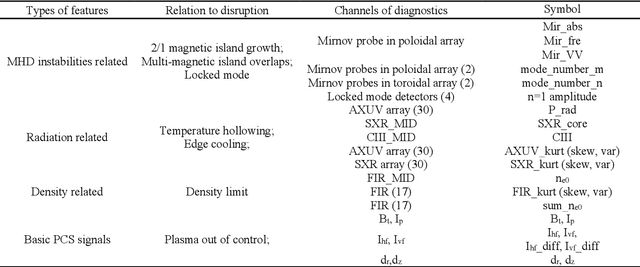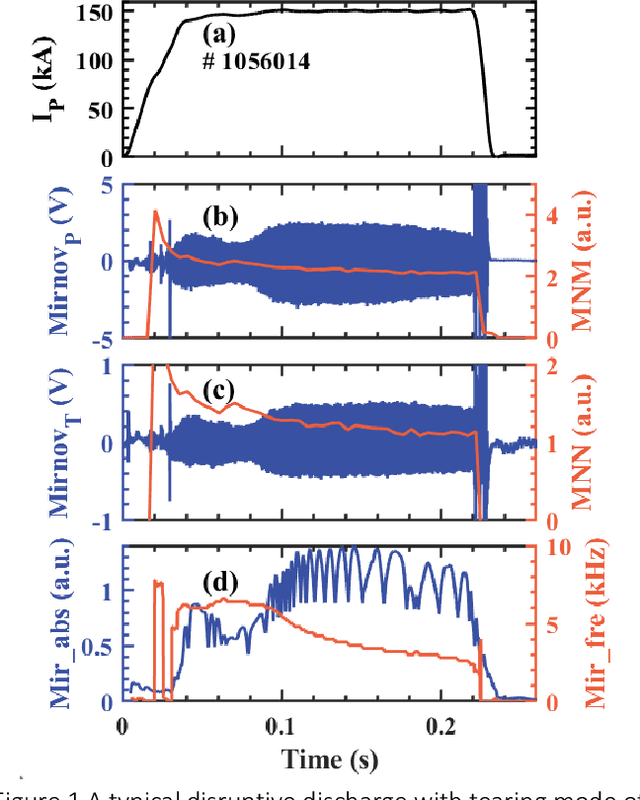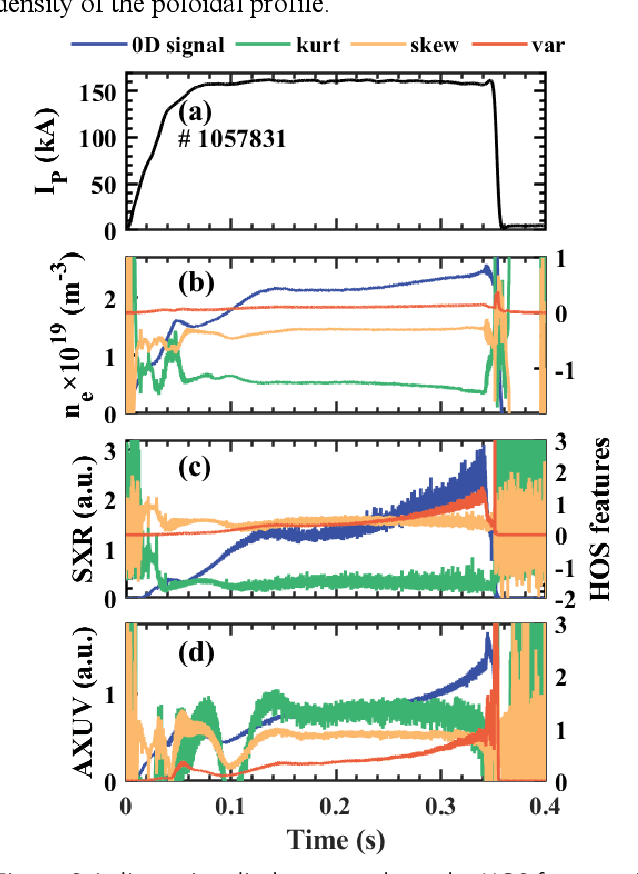IDP-PGFE: An Interpretable Disruption Predictor based on Physics-Guided Feature Extraction
Paper and Code
Aug 28, 2022



Disruption prediction has made rapid progress in recent years, especially in machine learning (ML)-based methods. Understanding why a predictor makes a certain prediction can be as crucial as the prediction's accuracy for future tokamak disruption predictors. The purpose of most disruption predictors is accuracy or cross-machine capability. However, if a disruption prediction model can be interpreted, it can tell why certain samples are classified as disruption precursors. This allows us to tell the types of incoming disruption and gives us insight into the mechanism of disruption. This paper designs a disruption predictor called Interpretable Disruption Predictor based On Physics-guided feature extraction (IDP-PGFE) on J-TEXT. The prediction performance of the model is effectively improved by extracting physics-guided features. A high-performance model is required to ensure the validity of the interpretation results. The interpretability study of IDP-PGFE provides an understanding of J-TEXT disruption and is generally consistent with existing comprehension of disruption. IDP-PGFE has been applied to the disruption due to continuously increasing density towards density limit experiments on J-TEXT. The time evolution of the PGFE features contribution demonstrates that the application of ECRH triggers radiation-caused disruption, which lowers the density at disruption. While the application of RMP indeed raises the density limit in J-TEXT. The interpretability study guides intuition on the physical mechanisms of density limit disruption that RMPs affect not only the MHD instabilities but also the radiation profile, which delays density limit disruption.
 Add to Chrome
Add to Chrome Add to Firefox
Add to Firefox Add to Edge
Add to Edge